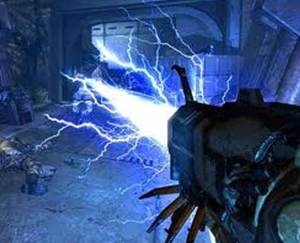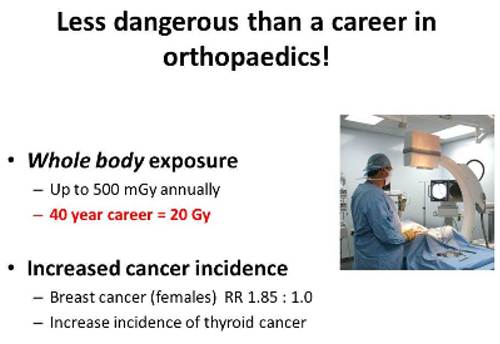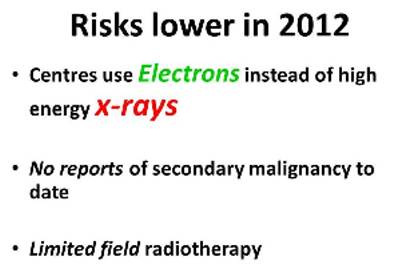Complications of Radiotherapy treatment for Dupuytrens:
- Dry skin (25%) – Has not been a major problem and is well controlled with regular application of skin moisturiser. Men seem to notice this issue more because they don’t routinely moisturise their hands.
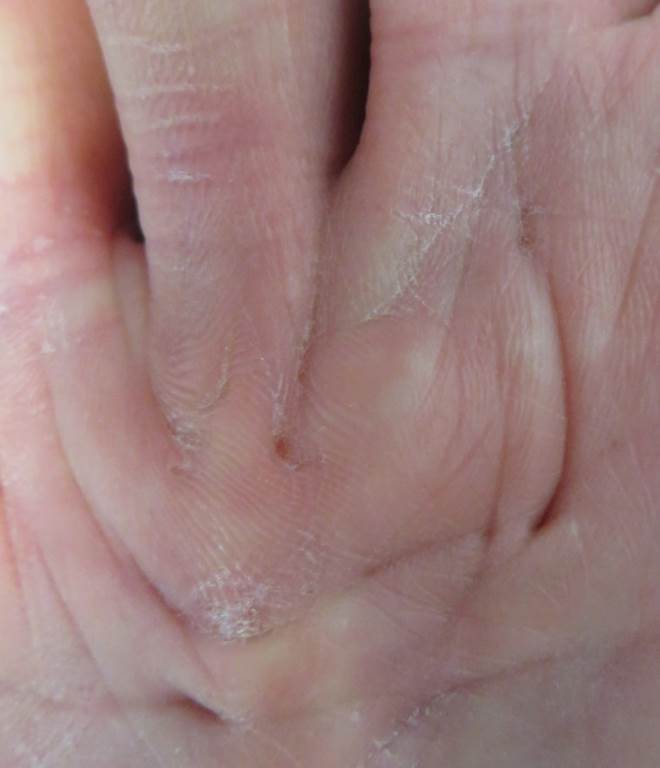
- Theoretical risk of cancer (risk unknown) but has not been reported to date.
- Cancer – No reported cases to date. There is a theoretical risk of cancer. We are all constantly exposed to low levels of background radiation eg increased when flying in aeroplanes
The table below provides some indication of doses for a number of routes and also indicates flying hours and number of flights taken to achieve a 1 mSv dose.
Hours Exposure for Effective Dose of 1 millisievert
Altitude (ft) Altitude (m) Hours at latitude 30° S (1) Hours at equator (2)
27,000 8,230 510 1,330
30,000 9,140 380 980
39,000 11,890 200 490
45,000 13,720 150 380
Source(s): (1) CARI-6 model - Averaged over a complete Solar Cycle (2) Effects of Cosmic Radiation on Aircrew – Herbert R Meyer
Route Estimates Dose/Flight (µSv) Flights for 1 mSv
Darwin-Perth 16 62
Melbourne-Singapore-London 65 15
Sydney-Buenos Aires 68 15
Data provided by Capt Ian Getley and adapted for presentation 1 mSv = 1000 µSv

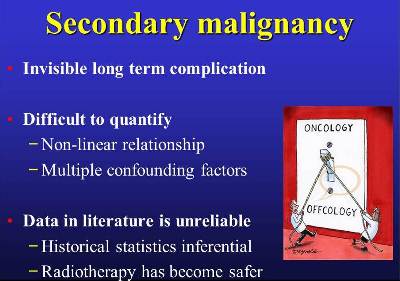
The mere mention of radiotherapy evokes mental images such as:
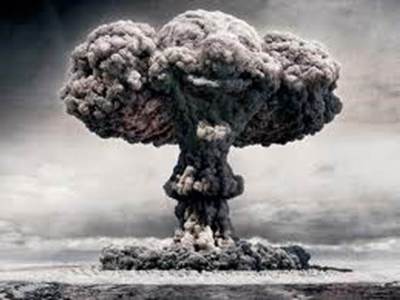
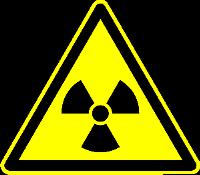
The average dose that it takes to induce cancer is now believed to be approximately 25 Sv = 2500 rem. (It was once thought that it took 4 x more than this, but 25 Sv is the current best estimate.) You will notice that it is very difficult to induce cancer in one person, because to give that person a cancer dose of 25 Sv would give them more than 8 times the dose for radiation poisoning. With a dose this high, they would die within a few days from radiation illness, long before any cancer could develop.
The sophistication of radiotherapy is far greater than in the past. Prince of Wales Hospital uses electrons instead of high energy x-rays. Also only a limited field is exposed to the radiation not the entire body.
One could argue that it is less dangerous than a career in Orthopaedics where the WHOLE BODY exposure is up to 500 mGy annually. Ie a 40 year career = 20 Gy. There is a 1.85 times incidence of Breast cancer in female Orthopaedic surgeons and a significant increase in Thyroid cancer.
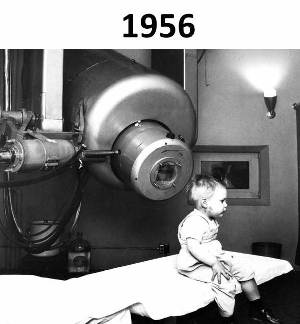
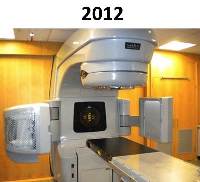
The Key question is “Would you recommend it for your family” . My answer is that “I would have no hesitation in having Radiotherapy for Dupuytrens disease if I was over 60”. Many of my patients have had radiotherapy at age 50. They are fully aware of the “unknowns” in this treatment but are very keen to avoid surgery.
Other complications include:
- Delayed wound healing post fasciectomy (0-5%) – To date has not been a problem.
- Skin atrophy and telegenctasia (7%)
- Persistent erythema or redness(2%)
- Altered sensation (<5%)
These possible side effects are being monitored for at the regular follow-up appointments.
Note also that complications need to be measured against the possible complications of other treatments for Dupuytren’s disease.

